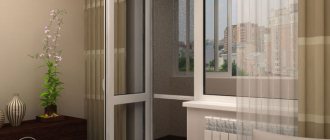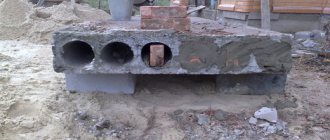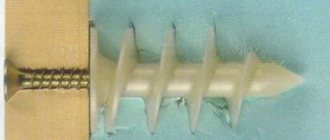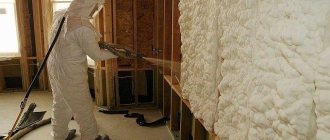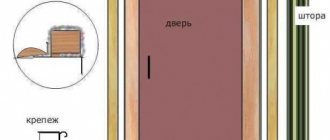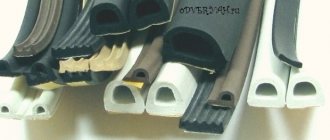When summer ends, many begin to think about how to somehow insulate their homes. But often, things don’t go further than sealing the windows (if they are wooden). Windows, even modern ones with a high level of energy saving, cannot completely solve the problem. After all, most of the warm air from the room exits through the entrance doors. To prevent heat loss, many people are thinking about purchasing insulated wooden entrance doors. Wood is an environmentally friendly and warm material. In addition, such doors have an attractive appearance.
Thermal insulation of apartments or houses
Entrance openings in traditional houses and apartments are quite large relative to the walls and ceiling. When the door swings open, a flow of heat from inside the room follows it every time. In addition, warm air escapes through the top and side gaps between the casing and the door. Cold air comes from the bottom of the door block from the entrance or street.
Natural heat loss is difficult to prevent. However, it is possible to solve the situation with cracks and low thermal conductivity of door panels. Insulated doors will keep cold air from outside and keep the room warm.
Seal installation
Installing frost-resistant insulation on the door leaf is only half the battle in eliminating the penetration of cold air into the living space. Even with the door closed, there remains a small gap between it and the frame, through which the cold will penetrate. Eliminating drafts is the next task for the home handyman.
To do this job, you should choose the optimal type of seal. Today, manufacturers can offer the following types of this material:
- Foam seals;
- Silicone seals;
- Rubber seals.
The first type of seal allows you to quickly and inexpensively solve the problem of drafts. It is ideal for the doorway of a structure such as a dacha, where there is no high intensity of opening and closing doors.
Foam rubber seal - inexpensive, but also short-lived
Using a silicone door seal will help eliminate drafts for a longer period of time than a foam rubber counterpart can do. The shape of the product ensures that the canvas is pressed tightly against the box, which will not allow air masses to move inside the room.
The best option is a rubber seal. Thanks to its characteristics, it allows you to get a warm opening for a long time, even with the most intensive use. In addition, the variety of shapes of this product makes it possible to install it on all types of door blocks.
Having chosen the desired seal option, all that remains is to install it in place. There are two main installation options:
- Using an adhesive strip.
- Using a harpoon in the groove.
The fastest way to install a new door seal is to use self-adhesive products. But this type cannot please you with its durability, so many experts recommend harpoon mounting in a groove.
It will be quite difficult to select a small groove in the quarter without disassembling the boxes. Therefore, it is permissible to carefully nail the seal with small nails. Fastening must be done in the very corner of the quarter. This will allow the canvas to take its position in the door block without difficulty and provide reliable protection from drafts.
Wooden insulated door
Today, modern manufacturers offer consumers several standard types of door designs. These are wooden panels with a finish that has thermal insulation properties on the inside or outside. Metal sheets covered with wood are also produced. Insulation is installed inside these doors. In addition to similar models, armored structures with insulation are offered.
The main feature of insulated wooden entrance doors is increased sound insulation and the absence of gaps through which warm air can pass. Another advantage is resistance to hacking. The design differs from other products in increased weight and width. As for the decorative properties, thanks to the finishing they are very attractive. The canvas can be finished with a thick layer of veneer, or MDF with three-dimensional patterns, glass, mirror inserts with various forged metal elements.
Upholstery with insulation
You can insulate a wooden door using various materials. Previously, cotton wool was widely used for this purpose due to the lack of alternative options. Cotton wool has fairly high thermal insulation properties, but has a number of disadvantages. The main disadvantage is the ability of cotton wool to absorb moisture from the air. Because of this, it creates a fertile environment for the proliferation of microorganisms.
In addition, the cotton wool will need to be replaced after 2-3 years. On the modern market, the range of insulation materials is much wider. For this purpose, different materials can be used.
Scheme of door upholstery using cotton wool, flax, tow.
- Foam rubber. Working with this heat-insulating material is very simple. But it has the same disadvantages as cotton wool, moisture absorption and short service life. The foam rubber begins to crumble and there is a need to replace it.
- Mineral wool. Basalt and synthetic fiber are used to produce this material, so it is not in danger of rotting. However, mineral wool will sag under the upholstery and will not provide volume.
- Izolon. This is a synthetic insulation that provides excellent thermal insulation even with a small layer thickness.
- Styrofoam. Compared to other insulation materials, foam retains its shape better. The technology of insulation with its help differs significantly from insulation with the above materials.
In addition to the heat-insulating material, you will also need to prepare material for decorative upholstery. It can be leatherette, genuine leather or any substitute.
It is recommended to insulate the door on both sides. Before starting work, it must be removed from its hinges and placed on a table or trestle. Any fittings that may interfere with work are removed. The insulation must be nailed with small nails or glued to the door leaf. You can use construction staples to secure it.
Next, the insulation is covered with finishing material. The covering is fastened with a furniture stapler, starting from the middle to the edges. The attachment points must be free of insulation. This must be provided for in advance when laying it. It is better to do this work together, with an assistant stretching the decorative material.
Related article: Combined wallpaper for the bedroom 2021: photo and design
Diagram of door upholstery with foam rubber.
It is recommended to upholster the perimeter of the door leaf with a roller made of the same material that is used for upholstering the door. The insulation strip is wrapped in upholstery material and attached around the perimeter of the door leaf. This will make the door more attractive and provide an additional thermal insulation effect.
You can make the door more stylish using a pattern made with furniture nails or a decorative element stretched over them: a strip of leather, a cord, etc. Once the upholstery is complete, you need to replace the previously dismantled fittings.
To insulate with polystyrene foam, you need to cut pieces of material around the perimeter of the door leaf or the opening of the frame (for insulation from the inside). The polystyrene foam must be covered with finishing material and glued to the door leaf using liquid nails.
You can use another fastening method. Along the perimeter of the canvas you need to fill slats corresponding to the thickness of the foam. The same strip needs to be nailed across the door and diagonally across the resulting rectangles. You need to lay polystyrene foam between the slats. After this, the door can be covered with clapboard or fiberboard.
However, it is worth considering that a door insulated in this way can become so heavy that an additional door hinge will be required to install it.
Structure
The outer contour of the door leaf is often equipped with a special insulation, which allows for the tightest possible coverage. It also protects the room from drafts. Inside the canvas there are insulating materials in the form of plates. This allows you to retain heat inside the room.
To ensure that the door can provide external protection from cold air, various decorative linings are used. Their thickness can reach 19 mm. Veneered panels are distinguished by a thinner layer - they are mainly oak, beech, hornbeam, pear or walnut. MDF panels can be milled or smooth. MDF, despite all its shortcomings, perfectly withstands harsh temperatures.
Step-by-step instructions for insulating a wooden door in a private house
The work is carried out taking into account the characteristics of the entrance group and the installation technology of the selected insulation.
Tools and materials
In the process of working, the following set of tools, devices and materials is required:
- nail puller, pliers;
- screwdriver, hammer;
- hacksaw, jigsaw;
- tape measure, stationery knife, scissors;
- construction stapler.
It is also necessary to prepare the estimated amount of insulation, sealant, sheathing material and fasteners.
Preparatory work
At the preliminary stage, the following work is performed:
- remove the door leaf;
- unscrew door fittings and hinges;
- remove the casing, if present;
- remove old insulation and sealant residues.
Next, the canvas and box are checked for structural defects, distortions and other defects are eliminated.
Cutting and laying insulation
Based on the measurements, blanks of the required sizes are made. When arranging a frame structure, the voids are tightly filled with layers of insulation. The material is fixed using a construction stapler.
Door trim
Dermantin is mainly used as a finishing layer. The upholstery fabric should be cut taking into account a margin of 10 cm on the sides in order to create the necessary thickening around the perimeter. The upholstery is secured with decorative nails and cord to form a distinctive raised pattern. Next, install the door hardware.
The surface of the door leaf is lined with artificial leather from the inside
Seal installation
To eliminate gaps, use self-adhesive strips or install a harpoon seal. Thanks to the special shape, the product fits as tightly as possible to the base, ultimately eliminating the risk of drafts and reducing the level of heat leakage from the room.
Additional measures and means of hydro- and thermal insulation
For maximum quality insulation of a street door in a private house, the joint around the perimeter of the frame is equipped with dermantine rollers with a foam insert inside. It is recommended to line the surface of the entrance sheet with artificial leather from the inside. From the outside, the structure is sheathed with a material that is highly resistant to aggressive atmospheric influences.
Insulation materials
Another feature of insulated entrance doors is a high level of sound insulation. Various materials can be used inside the door. Often this is corrugated cardboard, polystyrene foam, mineral wool, polyurethane.
Cellular cellulose
This filler is called honeycomb filler. However, in reality this is just ordinary corrugated cardboard. But it is laid in honeycombs. To achieve high performance, installation is carried out in three layers. The middle layer is a mesh with large cells.
When choosing an entrance door, it is better not to purchase models with such filling. They do not have high thermal insulation properties. Often, such paintings can be found in the entrances of houses. Also, in new inexpensive apartments these doors are installed as entrance doors.
Expanded polystyrene or polystyrene foam
Among the models of insulated entrance doors on the market, there are many that are insulated with foam plastic. This material consists of closed air bubbles. The material perfectly protects from various sounds, and of course, cold. Polystyrene foam also gives the canvas additional rigidity. It is characterized by low weight and low price.
For all its advantages, the material perfectly absorbs moisture. In doors with polystyrene foam, condensation may accumulate on the insulation during the cold season. This can lead to freezing of the foam, the appearance of fungi and mold. This material is also very flammable. If it somehow catches fire, it will produce toxic smoke.
In addition, condensation, together with the active use of the structure, contributes to the formation of small gaps between the plates. This means that the high thermal protection may soon be compromised by cold bridges.
Mineral wool
The characteristics of this material are generally similar to expanded polystyrene. Cotton wool also has a good level of noise and heat insulation. Mineral wool does not burn. It is hygroscopic, does not rot, and mold and fungi do not grow in it. But if humidity constantly affects it, then mold will still form. The cost of cotton wool is higher than polystyrene foam, but still affordable.
It would seem that this is an excellent insulation material, but it is more suitable for ventilated systems, facades, attics and other objects where, after installation, the slabs will not have direct contact with humans.
But cotton wool is not suitable for insulated entrance doors. Doors are constantly closing and opening. They also get knocked on - doors are often slammed. Because of this, the wool slabs can move from their places, shrink and crumple. As a result, cold bridges will form. The compacted cotton wool will break into dust at the slightest impact.
It is also better not to purchase products with such insulation.
Polyurethane
This material is completely suitable for insulation. Often, a gas-filled form is used for this. The foam has excellent adhesion. If the doors are filled with polyurethane foam, then it fills all the voids. The material quickly hardens and turns into a dense mass. Polyurethane is non-toxic and non-harmful, and also does not burn.
Research shows that a 2.5 cm layer of material protects against cold and noise in the same way as a 65 cm thick brick wall. In terms of thermal insulation, this is the best option, which significantly surpasses everything else. The service life of polyurethane is about 50 years. This is what manufacturers of quality doors use.
How to properly insulate a door frame
Often the cold penetrates not through the door leaf or through the joint, but through the frame. It is made of a metal hollow profile, so it is in no way protected from freezing. It is not difficult to fix such a problem. Prepare everything you need in advance - a bottle of foam (preferably with a gun for more accurate dosage), a drill with a metal drill (select the diameter of the drill according to the size of the tube or tip of the foam gun). Tips for carrying out the work:
- To begin, mark the locations for drilling holes. Make the first about 20 cm from the floor. The rest should be located at a distance of approximately 40 cm from each other. Make them in the middle so that the composition diverges in different directions. Try to place marks along the same line. This will look neater.
- Drill the holes with a drill and a drill bit of a suitable diameter. Go through the box carefully. Hold the tool strictly perpendicular, pressing it with moderate force. To simplify the process, first make small indentations with a center punch, then the drill will not slip.
- Fill the cavity with foam, do it carefully and gradually: if you overdo it, the box may bend. Distribute a small amount, then wait a couple of minutes as the composition gains volume. If he climbs out of the hole, move on and so on until the very top of the structure. To make it easier to remove excess foam later. Lubricate the surface around the holes with a thick layer of Vaseline.
- After the composition has hardened (after about an hour), cut off the excess with a sharp construction knife flush with the surface.
Advice!
To prevent the holes from spoiling the appearance, select plugs of a suitable color and size from a furniture store, cut off the lower protrusion from them and glue them to silicone.
Some people glue insulation to the box on both sides, but it is most effective to fill it with foam from the inside, then you can prevent the structure from freezing. In addition, the door will begin to close more pleasantly, and the clanging sound will disappear. The main thing is not to overdo it with foam so that it does not crawl out of the holes in all directions.
Finnish doors
Such products are very popular among consumers. This is a practical and at the same time stylish solution. Previously, these products were quite expensive. But today they are becoming more accessible.
Among the important user characteristics it is worth noting excellent thermal insulation properties, as well as high reliability and safety indicators. These doors harmoniously combine strength with an aesthetic appearance.
These products are made using special technology. The result is a very warm fabric. The design resembles a sandwich. Various materials are hidden inside the canvas, which interact with each other to create reliable and very warm wooden doors.
The frame of this design consists of very durable timber made of dense wood. Inside, polystyrene foam is used as insulation material.
Manufacturers offer a large selection of a wide variety of models with different finishes. These are solid wood panels with texture and glazing. This is an excellent choice for cold regions. These doors are of excellent quality at prices that are quite affordable for many.
We insulate the metal sheet
Often, a metal door (or rather, a door leaf) has voids around its perimeter. Therefore, in order to improve its thermal insulation characteristics, it is necessary to fill these voids with insulation. The best option for this is polystyrene foam, since it is possible to cut this material into strips of the required thickness, taking into account the size of the corner of the doorway. Installation of polystyrene foam is carried out using liquid nails. It will be very practical to fill the remaining gaps with polyurethane foam.
Expanded polystyrene is optimal for insulating iron structures.
Since a metal door is essentially a sheet welded to a frame made from corners, the inside of such a structure is most often empty. It is these voids that need to be filled with insulating material. Let's consider the option of insulating the door using polystyrene foam. So, how to insulate an iron door? The process is carried out in stages:
- We remove the canvas from the hinges, lay it horizontally, open it and take out the cardboard or other filler inside.
- We measure the length and width of the door leaf. We cut out a panel of the appropriate size from fiberboard. In the future, this panel will cover the polystyrene foam layer.
- We cut polystyrene foam boards into pieces of such sizes that they fit tightly inside the door leaf, between the corners. Cutting polystyrene foam is done with an ordinary well-sharpened knife.
- Using mounting silicone, we attach the resulting polystyrene foam boards to the inner surface of the door leaf. Silicone should be applied to the entire inner surface of the door leaf in an even, dense layer.
- After laying the expanded polystyrene, we cover it with previously prepared chipboard panels. The latter are attached to the corners of the door with self-tapping screws.
- Another step in insulating a metal entrance door can be considered filling the door stiffening ribs with polyurethane foam. Since these stiffeners are hollow tubes, they freeze strongly and, thus, create the effect of a refrigerator.
To prevent such a problem from occurring, holes should be drilled in the tubes and the tubes should be filled with foam through them.
Tip: when preparing fiberboard panels, you need to calculate and cut holes for the door handle, lock and inspection peephole in advance.
The warmest door
Even with the best insulated entry doors, the room can feel cold. To get maximum heat, you need to install two doors. So, the external entrance will be responsible for safety, while the second will retain heat.
An air gap is formed between the two doors, which will improve thermal insulation. Today, special thermal doors are offered on the market. These models are protected from external factors and have the best heat retention characteristics.
Do-it-yourself insulation
It is not always possible to purchase the necessary design, but you can make a new and insulated one from an old cold door. If you have certain skills, this will not be so difficult. As a result, such a fabric will help you survive the cold winter months in warmth.
If high security indicators are required, it is recommended to purchase a metal or even armored door. Among them there are also insulated structures that can keep the room safe and warm.
If you need to choose a suitable model among several insulated doors, it is recommended to trust the manufacturer whose products have been tested by time. It is important to check the certificates and read reviews before the transaction, because this purchase is not made for one season.
